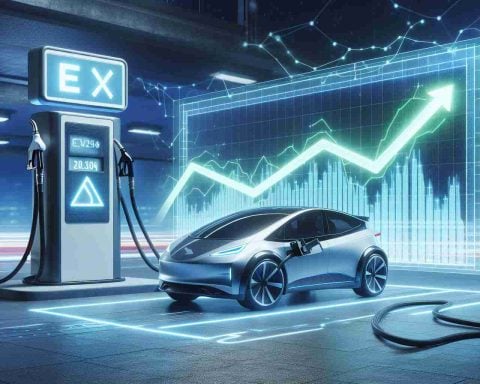The latest advancement in battery technology could make your devices significantly safer. Researchers from South Korea’s Daegu Gyeongbuk Institute of Science and Technology (DGIST) have unveiled a groundbreaking triple-layer solid polymer electrolyte that enhances battery safety and longevity.
This innovative design incorporates a lithium-ion battery that can self-extinguish in the event of a fire and boasts resistance to explosive reactions. Compared to traditional lithium-ion batteries, which are commonly used in everything from smartphones to electric vehicles, this new battery also offers an improved lifespan.
The challenge with conventional lithium-ion batteries lies in their reliance on liquid electrolytes, which can ignite under certain conditions. Furthermore, the separators that isolate the electrodes are vulnerable to damage, potentially leading to short circuits and dangerous explosions. To combat these issues, researchers have devoted their efforts to developing solid polymer batteries that maintain safety while delivering high performance.
The new triple-layer system has a robust middle layer made from zeolite, which enhances the battery’s structural integrity. The outer layers play crucial roles in electrode contact and energy efficiency. Notably, one layer contains a fire-retardant substance that not only prevents fires but can also extinguish them when necessary.
In testing, this innovative battery retained nearly 88% of its performance after 1,000 charge-discharge cycles, a notable improvement over traditional options. This exciting development is expected to broaden the application range of lithium metal batteries, paving the way for their use in numerous sectors.
Revolutionizing Battery Safety: The Future of Solid Polymer Electrolytes
Introduction to Advanced Battery Technology
In recent years, battery safety has become a crucial concern as devices become more powerful and widespread. Researchers from South Korea’s Daegu Gyeongbuk Institute of Science and Technology (DGIST) have introduced a state-of-the-art triple-layer solid polymer electrolyte that not only enhances safety but also extends the lifespan of batteries significantly. This groundbreaking innovation promises to redefine the landscape of battery technology.
Key Features of the New Battery
1. Self-Extinguishing Properties: This new battery design can self-extinguish in case of a fire, a crucial effectiveness that addresses common safety hazards associated with traditional lithium-ion batteries.
2. Explosive Reaction Resistance: The improved structure mitigates the risk of explosive reactions, a major concern for conventional liquid electrolyte batteries.
3. Enhanced Lifespan: In testing, the battery retained about 88% of its performance after 1,000 charge-discharge cycles, indicating a substantial enhancement over typical lithium-ion batteries, which often degrade far more quickly.
4. Innovative Structure: The triple-layer system features:
– Middle Layer: Made from zeolite, this layer bolsters the battery’s structural integrity.
– Outer Layers: These influence electrode contact and overall energy efficiency. One layer is specifically designed with a fire-retardant material, which not only prevents fires but actively extinguishes them when needed.
Pros and Cons of the New Technology
Pros:
– Improved safety features reduce the risk of fires and explosions.
– Longer lifespan leads to lower costs over time and less frequent replacements.
– Broad application potential across various industries, including consumer electronics and electric vehicles.
Cons:
– Manufacturing and material costs may be higher compared to traditional lithium-ion batteries.
– Further testing and regulatory approval may be required before widespread adoption.
Use Cases and Market Potential
This triple-layer solid polymer battery could have significant implications for numerous sectors. Industries such as:
– Consumer Electronics: Smartphones, laptops, and wearables could benefit from enhanced safety and longevity.
– Electric Vehicles (EVs): Improved battery design could address safety concerns around EV battery fires, promoting greater public trust.
– Renewable Energy Storage: More efficient and safer batteries can enhance the storage capabilities for solar and wind energy systems.
Limitations and Future Directions
While the new technology shows great promise, there are limitations to consider:
– Scalability: Production processes need to be refined for mass production.
– Compatibility: Existing devices may require redesign to accommodate the new battery type.
Pricing Insights and Market Trends
As with any emerging technology, pricing will play a critical role in the adoption of the triple-layer solid polymer battery. Initial costs may be higher due to the new materials and manufacturing processes, but as production scales, prices are expected to decrease. Market analysis indicates a rising demand for safer and more efficient energy storage solutions, which this innovation could readily meet.
Conclusion: Innovations in Battery Technology
The introduction of a triple-layer solid polymer electrolyte marks a significant step forward in battery technology. As researchers continue to refine and test this innovation, the potential for safer, more durable batteries is set to revolutionize not just consumer tech but a wide array of industries relying on reliable energy storage. For those interested in the latest advancements in technology, keeping an eye on these developments will be essential as we move towards a safer future.
For further insights and updates on battery technology, visit DGIST.










